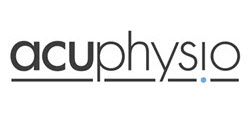
What is a stroke?
A stroke is a sudden disruption of blood flow to a region in the brain for more than 24 hours. A disruption of blood flow leads to damage or death of brain tissues. Brain damage can occur within minutes of lacking blood supply.
There are two major types of stroke:
-Infarct: blockage of blood vessel leading to insufficient blood supply and damage to brain
-Hemorrhage: bleeding of blood vessel leading to brain damage
Who is higher risk of stroke?
Anyone can have a stroke, but some people have a higher chance of having stroke as comparing to others. The following are the risk factors that makes someone more likely to suffer from stroke that are not controllable.
-Age over 55
-Male Gender
-African American, Hispanic or Asian
-Have a family of stroke
Controllable risk factors for stroke
Some risk factors are controllable, and these can be modified or controlled and so that the risk of stroke can be lowered.
These factors include:
-High blood pressure
-Smoking
-Heavy alcohol drinking
-Diabetes Mellitus
-Lack of exercise
-High salt diet, high fat diet
-Circulatory diseases
-High cholesterol level
Through healthy lifestyle, exercise and proper medication, these factors can be changed/ eliminated, and the risk of stroke can be reduced.
What if a stroke happened?
Stroke is not uncommon. It is actually the leading cause of adult disability in the US. Stroke is also known as a “brain attack,” so when it happens, proper evaluation should be done and emergency help should be immediately acquired.
The FAST principle should be carried out when someone is suspected to have a stroke.
F: Facial- tell the person to smile, and note if he can do it, also note if there is any drooling.
A: Arms- tell the person to raise his arms, see if he can raise one side or both sides.
S: Speech- note if the person speaks with a slurred speech.
T: Time- it is always essential to send the person to hospital as soon as possible, remember stroke is a “brain attack.” Time is very important.
Stroke diagnosis
Diagnosis of stroke is made by a doctor. He uses physical examination, history and studies (like radio-graphic studies) to decide whether the patient has stroke. The doctor also uses these to decide the severity of the patient.
Treatment for stroke
The interdisciplinary team
The interdisciplinary medical team consists of:
-Medical doctor, nurses, physical therapist, occupational therapist, speech therapist, social worker and psychologist.
-Each team member contributes their knowledge and skills to help the patient going through different stages of recovery after stroke.
Care/ treatment for stroke- Goals
Main goals of stroke rehabilitation are to:
-Prevent complication development (lung infection, bedsore)
-Maintain/ improve physical function
-Decrease physical dependence
-Prevent swelling/ injury of affected limbs
-Improve quality of life of patient
Care/ treatment for stroke- Components
Each patient has different level of brain damage and physical disability. Examples are language problem, physical problem or mental problem. Individualized goals and plans should be set for each patient.
Means to achieve above goals:
1. Preventing bedsore: frequent turning (every two hours), moisturizing and cleaning of skin, prevent shearing force when transferring patient (do not drag patient)
2. Preventing lung infection: do deep breathing exercise, have balanced meals, do more physical movements, swallow slowly and carefully.
3. Preventing shoulder sublaxation and shoulder pain: use arm support or tapping.
-Maintain/ improve physical function
1. Increase use of affected limbs and weight bearing
2. Do exercises as instructed by physical therapist
3. Use proper way of transfer as instructed by physical therapist, prevent ways like “pulling onto handrail of bed” to get up or over rely on unaffected leg
-Reduces physical dependence
1. Increase patient's awareness of affected limbs by standing on the patient's affected side, so that the patient is more likely to look and turns toward that side.
2. Patient should practice activities of daily living as guided by physical therapist
-Prevent swelling/ injury to affected limbs
1. Wear pressure stocking (guided by therapist)
2. Elevate limbs above heart level
-Improve quality of life of patient
1. Improve patient's self confidence in his ability (walking, using walking aid, transfer)
2. Enhance functional improvement of patient
Acupuncture
Acupuncture is used to:
1. Normalize muscle tone
2. Improve active control of affected side
3. Improve awareness of affected side
Positioning for stroke patients
Positioning is very important for a patient with stroke. This can prevent development of muscle tone increase (spasticity) and/ or joint loosening. (especially shoulder)
1. Lying
-Mattress should be at least 5cm thick
-Pillow should provide enough support
-Support affected limbs with three to four pillows if necessary
-Affected shoulder and hip should be in a forward, relaxed position, elbow and fingers straight, knees slightly bent
-Turn every two hours
2. Sitting
-Sit with pillow to support affected arm
-Fingers and hand supported with pillows
-Back should be straight
-Sit in chair with back support, knees bent 90 degrees
Exercises for stroke patients
All exercises for stroke patients should be guided by a therapist.
1. Arm raise
-Use unaffected arm to help bringing the affected arm up in the forward direction
2. Arm forward move
-Use unaffected arm to help bringing the affected arm forward
-Note that both shoulders should really try to push forward
3. Legs mobilization exercise
-Lying on your back with a therapeutic ball underneath legs
-Slide both legs forward and backward on the ball
4. Bridging exercise
-Lying on your back with legs together, knees bent
-Use your buttock to lift the lower body off the bed
-Hold for five seconds
5. Steps exercise
-Stand in front of a stool or stair
-Go up with your affected leg, down with the other
6. Diagonal arm movement
-Placing arm/ hand on one side of the body
-Rotate your body to the other side
-Then returned to original position
